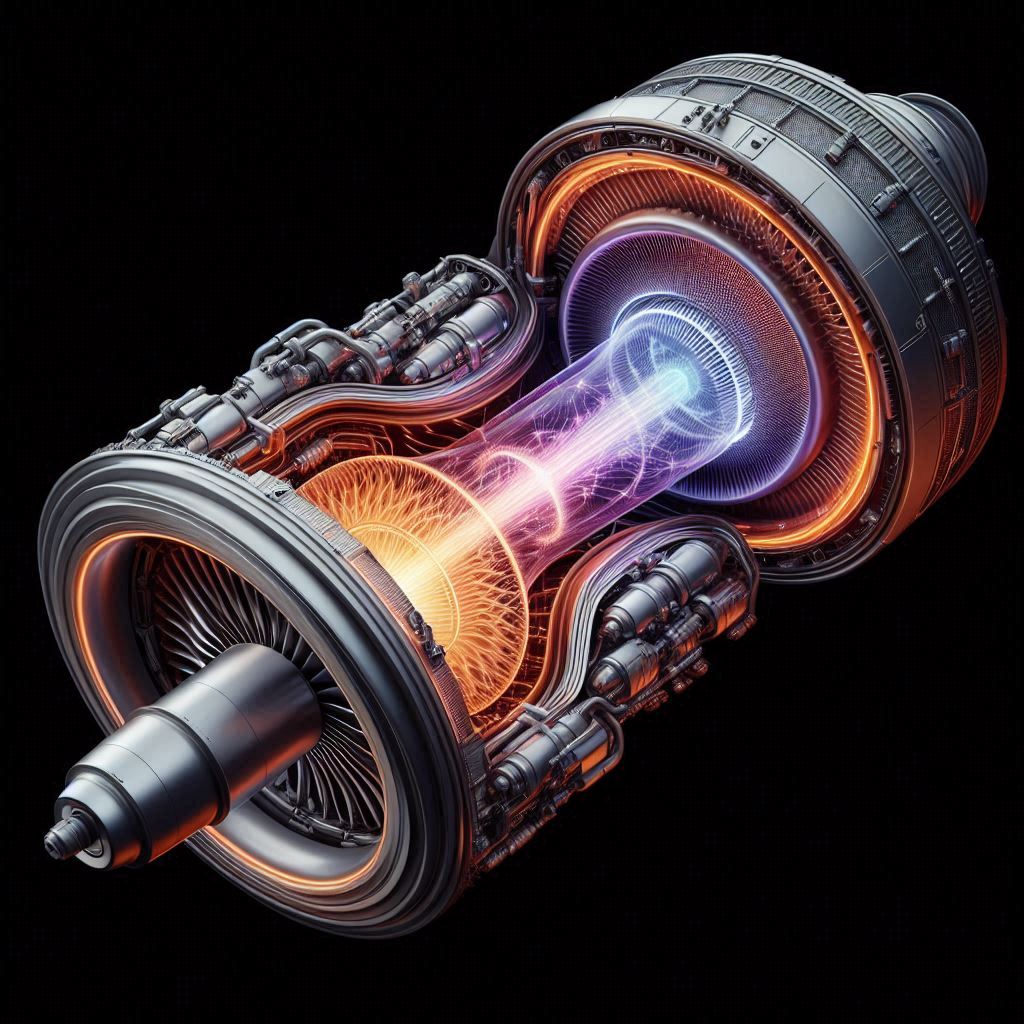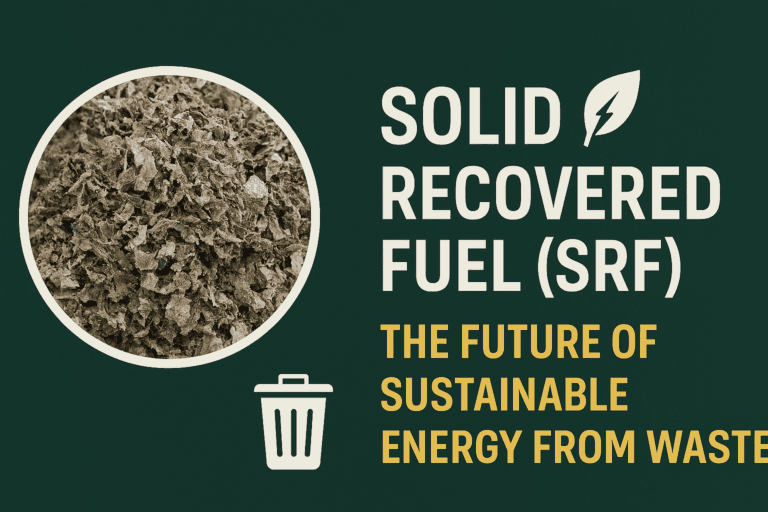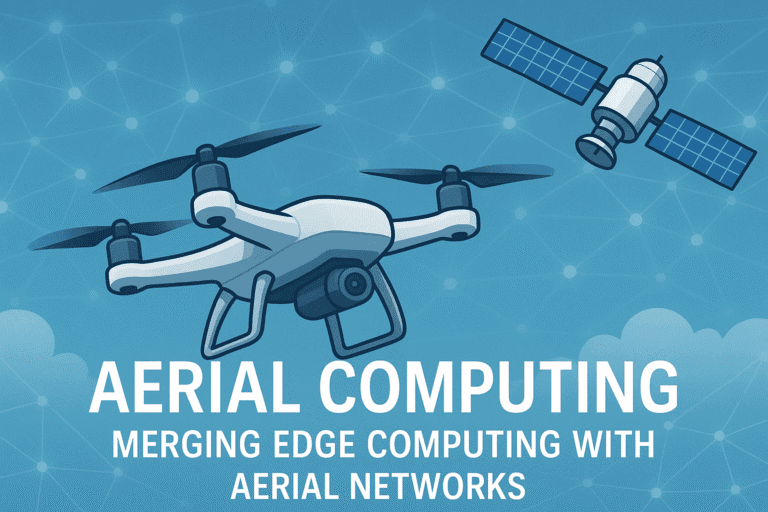Introduction: The New Frontier in Space Propulsion
As we venture deeper into space, the limitations of traditional chemical rockets are becoming increasingly apparent. Although they have successfully powered space missions for over half a century, these rockets are constrained by their need for large amounts of fuel and their relatively low efficiency. To overcome these challenges and unlock the potential for longer and more ambitious space missions, scientists and engineers are turning to plasma jet engines, a revolutionary propulsion technology that promises to change the way we explore the cosmos.

Plasma jet engines, or plasma ion thrusters, use electric fields to accelerate ionized gases (plasma) to incredibly high velocities, generating thrust more efficiently than chemical rockets. This technology holds the potential to significantly reduce travel times to distant planets, improve fuel efficiency, and enable sustainable space exploration. In this article, we’ll delve into the workings of plasma jet engines, compare them to traditional propulsion methods, and explore their future applications in space travel.
Understanding Plasma Propulsion: How Does It Work?
What is Plasma?
Plasma is considered as the fourth state of matter, distinct from solids, liquids, and gases. It is a hot, ionized gas composed of charged particles—positive ions and free electrons. When a gas is heated to extremely high temperatures or subjected to a strong electromagnetic field, its atoms lose electrons and become ionized, forming plasma. This state of matter is common in the universe, found in stars, lightning, and even in our daily technology like neon signs and plasma TVs.
How Plasma Jet Engines Operate
Plasma jet engines operate on the principle of ionizing gas and then using electric or magnetic fields to accelerate the plasma, producing thrust through Ion Thrusters. The process involves several key components:
- Ionization Chamber: The gas (commonly xenon or argon) is introduced into the ionization chamber, where it is bombarded by electrons. This interaction strips electrons from the gas atoms, creating a plasma of positively charged ions and free electrons.
- Acceleration Grids: Once the plasma is created, it is subjected to an electric field generated by acceleration grids. These grids accelerate the ions to high speeds, ejecting them from the engine to create thrust. The velocity of the ions can reach up to 100,000 meters per second, far exceeding the exhaust velocity of chemical rockets.
- Magnetic Nozzle: In some designs, a magnetic field is used to direct and focus the ion stream as it exits the engine. This increases the efficiency of the propulsion system by ensuring that the ions are expelled in a controlled manner, maximizing thrust.
- Exhaust: The high-speed ejection of ions from the engine produces thrust according to Newton’s third law of motion—every action has an equal and opposite reaction. The continuous expulsion of ions generates a steady, efficient propulsion system capable of sustaining long-duration space missions.

The efficiency of plasma jet engines is measured by their specific impulse (Isp), which indicates the amount of thrust produced per unit of propellant. Plasma engines have a much higher specific impulse compared to chemical rockets, making them ideal for missions where fuel efficiency is critical.
Plasma Propulsion vs. Chemical Rockets: A Comparative Analysis
Efficiency and Specific Impulse
The most significant advantage of plasma jet engines over chemical rockets is their superior efficiency. Chemical rockets generate thrust by burning fuel, which produces a high-temperature exhaust that is expelled at relatively low speeds (2,500 to 4,500 meters per second). In contrast, plasma jet engines accelerate ions to much higher velocities, resulting in a specific impulse that can be several times greater than that of chemical rockets.
For example, the specific impulse of a typical chemical rocket is around 300 to 450 seconds, while a plasma jet engine can achieve a specific impulse of 1,500 to 10,000 seconds or more. This increased efficiency means that spacecraft equipped with plasma engines can travel farther and faster on a given amount of propellant, making them ideal for long-duration missions to distant planets or even interstellar space.
Thrust and Power Requirements
While plasma engines are highly efficient, they produce much lower thrust compared to chemical rockets. This low thrust makes plasma engines unsuitable for launching spacecraft from Earth’s surface, as they cannot overcome the planet’s gravity. Instead, plasma engines are designed for in-space propulsion, where they can provide continuous, gradual acceleration over long periods.
The power requirements for plasma engines (Ion Thrusters) are also higher than for chemical rockets, as they rely on electricity to ionize the propellant and accelerate the ions. This necessitates the use of onboard power sources, such as solar panels, nuclear reactors, or advanced batteries, to provide the necessary energy for the engine to operate.
The Evolution of Plasma Jet Engines: From Concept to Reality
Early Developments and Proof of Concept
The concept of using plasma for propulsion dates back to the early 20th century, but it wasn’t until the 1960s that the first practical demonstrations were achieved. NASA’s Space Electric Rocket Test (SERT-1) mission in 1964 marked the first successful use of an ion thruster in space. The mission demonstrated the feasibility of using electric propulsion for space travel, laying the groundwork for future advancements in plasma technology.
Since then, several types of plasma engines have been developed and tested, each with unique characteristics and applications:
- Hall Effect Thrusters: Hall thrusters are one of the most widely used types of plasma engines. They utilize a magnetic field to confine and accelerate plasma, producing thrust. Hall thrusters have been employed on several spacecraft, including the European Space Agency’s SMART-1 lunar probe, and have proven to be reliable and efficient for long-duration missions.
- Magnetoplasmadynamic (MPD) Thrusters: MPD thrusters use both electric and magnetic fields to accelerate plasma, offering the potential for higher thrust levels compared to other plasma engines. However, they require substantial power, making them more suitable for missions where large amounts of energy are available, such as nuclear-powered spacecraft.
- VASIMR (Variable Specific Impulse Magnetoplasma Rocket): Developed by Ad Astra Rocket Company, VASIMR is an advanced plasma propulsion system that can vary its specific impulse and thrust, making it adaptable for different mission profiles. VASIMR is designed to enable rapid transit to Mars and other distant destinations by combining high thrust with high efficiency.
Current Research and Development
Today, plasma propulsion is at the forefront of space exploration research, with NASA, ESA, and private companies investing heavily in the development of next-generation plasma engines. The focus is on improving the efficiency, durability, and scalability of these engines to support future missions to Mars, the outer planets, and beyond.
Recent advancements include the testing of high-power Hall thrusters, the development of new materials to enhance engine longevity, and the exploration of alternative propellants that could further improve performance. These efforts are aimed at creating a propulsion system capable of operating reliably for years or even decades, which is essential for deep-space exploration.
The Advantages of Plasma Jet Engines for Space Exploration
Long-Duration Missions
Plasma jet engines are particularly well-suited for long-duration missions, where the efficiency of propulsion is paramount. Traditional chemical rockets are limited by the amount of fuel they can carry, which restricts the duration and range of space missions. In contrast, plasma engines can operate continuously for extended periods, using a small amount of propellant and converting it into high-velocity ions.
This capability is especially valuable for missions to the outer planets or interstellar space, where travel times can be several years. For instance, a mission to Jupiter using plasma propulsion could significantly reduce travel time compared to chemical rockets, while also allowing for more complex mission profiles and increased payload capacity.
Flexibility in Mission Design
Plasma jet engines offer greater flexibility in mission design compared to chemical rockets. Because they can vary their specific impulse, plasma engines can be optimized for different phases of a mission. For example, they can operate at high thrust during the initial stages of a journey to achieve the necessary speed, and then switch to a higher specific impulse mode for efficient cruising over long distances.
This adaptability makes plasma engines ideal for a wide range of missions, from low-Earth orbit (LEO) operations to deep-space exploration. They can be used for station-keeping, orbital transfers, and even for missions beyond the solar system.
Potential for Reusability
As the space industry moves toward reusability, plasma jet engines could play a crucial role in the development of reusable spacecraft. The high efficiency and durability of plasma engines make them well-suited for multiple missions, reducing the cost and environmental impact of space exploration.
Reusability is also essential for the development of space infrastructure, such as space stations, lunar bases, and interplanetary habitats. Plasma propulsion could enable the frequent transportation of cargo and personnel between these locations, supporting the long-term human presence in space.
The Challenges of Plasma Jet Engines: Overcoming Technical and Economic Barriers
Power Generation and Management
One of the primary challenges facing plasma jet engines is the need for a reliable and sustainable power source. Plasma engines require significant amounts of electrical power to operate, which presents a challenge for missions far from the Sun, where solar power is less effective. Nuclear power is a potential solution, but it comes with its own set of technical and regulatory challenges.
Advancements in power generation and management, such as the development of more efficient solar panels, nuclear reactors, and energy storage systems, will be critical to the success of plasma propulsion in future missions.
Thrust-to-Weight Ratio
While plasma engines are highly efficient, their low thrust-to-weight ratio limits their use to in-space propulsion. This means that chemical rockets will still be necessary for launching spacecraft from Earth’s surface. However, once in space, plasma engines can take over, providing efficient propulsion for the remainder of the mission.
Research is ongoing to improve the thrust-to-weight ratio of plasma engines could expand their applicability to a broader range of missions. This includes the development of hybrid propulsion systems that combine the benefits of chemical and plasma propulsion.
Cost and Market Adoption
The cost of developing and deploying plasma jet engines is another significant barrier. While the long-term benefits of plasma propulsion are clear, the initial investment required for research, development, and testing is substantial. This has slowed the adoption of plasma engines in commercial space missions.
However, as the technology matures and the benefits become more apparent, it is expected that the cost will decrease, leading to broader market adoption. Public-private partnerships, government funding, and advances in manufacturing techniques will also play a role in reducing costs and accelerating the deployment of plasma propulsion systems.
The Future of Plasma Jet Engines: A Glimpse into Tomorrow’s Space Exploration
Human Missions to Mars and Beyond
Plasma jet engines could be the key to enabling human missions to Mars and beyond. The high efficiency and durability of these engines make them ideal for the long-duration missions required for interplanetary travel. NASA’s Artemis program, which aims to return humans to the Moon and eventually send them to Mars, could benefit from the integration of plasma propulsion technology.
In addition to Mars, plasma engines could enable missions to the outer planets and even interstellar space. The continuous thrust provided by plasma propulsion could significantly reduce travel times to distant destinations, making manned missions to the outer solar system a possibility.

Space Infrastructure and Commercial Applications
As space exploration becomes more commercialized, the demand for efficient and reliable propulsion systems will increase. Plasma jet engines could play a crucial role in the development of space infrastructure, such as orbital refueling stations, lunar bases, and space tourism vehicles. The ability to reuse and refuel spacecraft equipped with plasma engines could lower the cost of space travel and make it more accessible to private companies and individuals.
Moreover, plasma propulsion could enable new commercial ventures, such as asteroid mining and interplanetary cargo transport. The efficiency and longevity of plasma engines make them ideal for missions that require sustained operation over long periods, which is essential for commercial enterprises that aim to exploit the resources of space.
Conclusion: Plasma Jet Engines and the Future of Space Exploration
Plasma jet engines represent a revolutionary leap in space propulsion technology. Their superior efficiency, adaptability, and potential for reusability make them a critical component of future space missions. While there are challenges to overcome, such as power generation and cost, the long-term benefits of plasma propulsion are undeniable.
As we stand on the brink of a new era in space exploration, plasma jet engines could be the key to unlocking the mysteries of the cosmos. From enabling human missions to Mars to supporting the development of space infrastructure, these engines have the potential to revolutionize the way we explore and utilize space. The future of space travel is bright, and plasma jet engines are poised to play a leading role in that journey.
Explore More on Related Topics
If you found this article on plasma jet engines fascinating, you might want to check out some of our other insightful articles:
- Artificial Rain: Harnessing Technology for Climate Control – Delve into the science behind artificial rain and its potential to mitigate droughts and support agriculture.
- Hydrogen-Powered Drones: The Future of Unmanned Aerial Vehicles – Explore how hydrogen fuel cells are revolutionizing drone technology for longer flights and eco-friendly operations.
- Piezoelectric Roads: Generating Energy from Traffic – Learn about the innovative use of piezoelectric materials to generate electricity from road traffic, a promising solution for sustainable energy.
- Acoustic Metamaterials: The Future of Noise Cancellation – Discover how cutting-edge metamaterials could transform noise reduction in urban and industrial environments.






